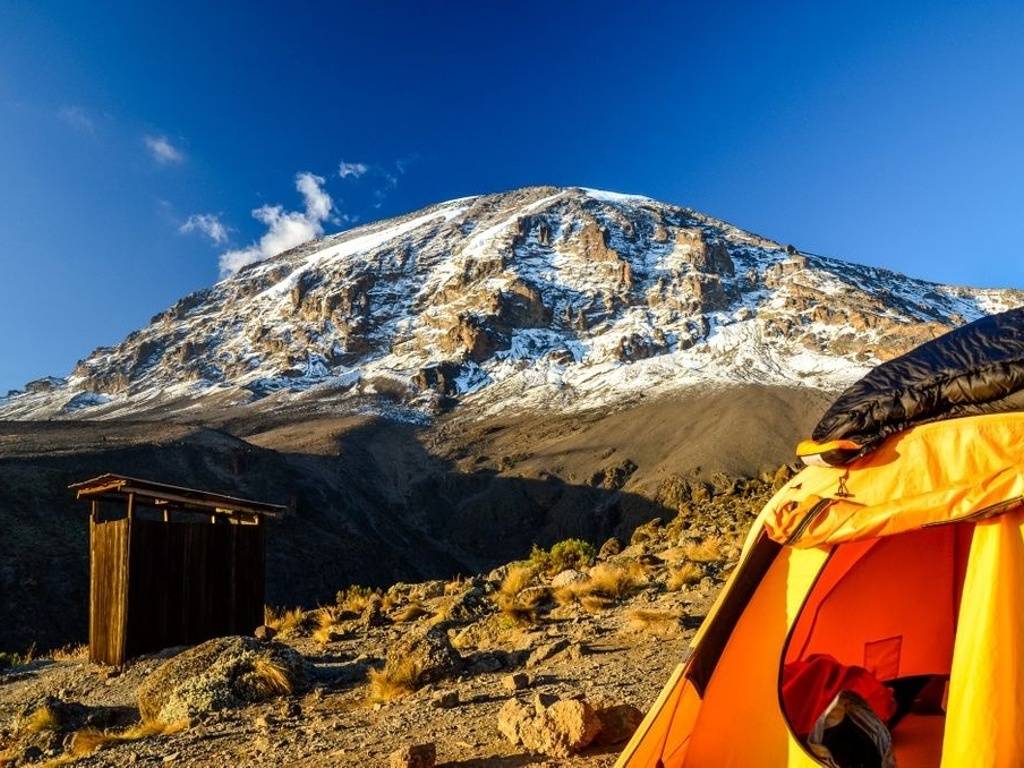Your essential packing guide for Tanzania’s iconic mountain.
Kilimanjaro has gorgeous views, abundant wildlife and challenging landscapes making it the perfect destination for the adventurous traveller. Luckily, Mt. Kilimanjaro is less of a technical climb and more of a long trek, making it a possible climb for those without extensive mountain-climbing experience. It is often called the ‘walk-up’ mountain. But Africa’s highest peak is not an easy climb. It is an ascent into extreme altitudes of 5,589m on a trek that can last anything from five to nine days to complete. Statistically, less than half of all climbers on Kilimanjaro make it to the summit, although all make it some way up the mountain to enjoy the awesome views of waterfalls, lava rock formations and glaciers. Pre-trip training and packing the right gear will increase your chances of summiting the iconic Uhuru Peak and will ensure an enjoyable, thrilling yet safe adventure that is memorable for all the right reasons.
Kilimanjaro has two rainy seasons, the first is from March through May and the second occurs in November. This means that there are two distinct trekking seasons, January-March and June-October, which give the optimum conditions for climbing. January to March is generally colder than June through to October and there is a higher probability of encountering snow on the summit. The gear list below is suitable for both climbing seasons.
Kilimanjaro guides warn that most travellers bring too much gear. For this reason, we have kept the list to the bare minimum and to the essentials. It is worth noting that all climbers are obliged by Tanzanian law to climb with a guide AND to hire a porter to carry equipment.
Outdoor Adventure Store staff have tried and tested all the gear we sell and are on hand to assist with your questions and gear related queries.
We want you to enjoy your Outdoor Adventures to the absolute max!
Climbing equipment
- Ice axes with straps
- Crampons
- Climbing harness
- Locking snap hooks (2)
- Classic snap hooks (4)
- Blocker (Ascender). A right or a left
- Insurer (2)
- Climbing helmet
- Draw strips
- Adjustable trekking poles
Shoes
- Light hiking shoes or trekking shoes for trekking to the base camp
- Tennis shoes or low shoes
- Boots
- High altitude climbing shoes.
- Trekking socks (3)
- Wool or synthetic socks (4)
- Lining socks (4)
Technical clothing
- Lightweight long underwear (2-3) Tops and bottoms.
- Warm long underwear. Up and down.
- Lightweight nylon pants (1 -2)
- Short sleeve synthetic shirt (1-2)
- Synthetic jacket / Soft Shell with full zip
- Synthetic pants / Soft shell with full zip
- Insulating synthetic jacket
- Insulated synthetic pants with side closures
- Shipping jacket
- Goose down shipping suit
- Hard Shell jacket with hood
- Hard Shell pants with zippers
For the hands
For the head
- Front and spare bulbs and batteries
- Glacier glasses
- Cap or hat for the sun (2)
- Ski glasses (2)
- Balaclava (2) A warm and light one
- Warm synthetic or woollen cap (2)
- Bandanas or scarf (2)
- Neoprene face mask
Personal equipment
- Shipping backpack 65 to 80 litres
- Trekking backpack 30 to 40 litres
- Sleeping bag -40°C
- Sleeping bag -30°C
- Whole foam mattress (2)
- Plastic cup. Isothermic plastic mug with cover
- Spoon made of resistant plastic
- Sunscreen (2) 40 or more
- Lip balm (2) 20 or higher
- Water bottle (2) 1-litre wide-opening bottles
- Water bottle pocket (2) For the above bottles
- Urination bottle (2) 1 litre bottles with wide opening
- Urine bag (for women)
- 1 litre stainless steel isothermal bottle Thermos
- Compactor bin bags (4)
- Compression bags (2) For sleeping bags and clothing
- Shipping bags (2) Large size with locks
- Small personal first aid kit and personal medication

